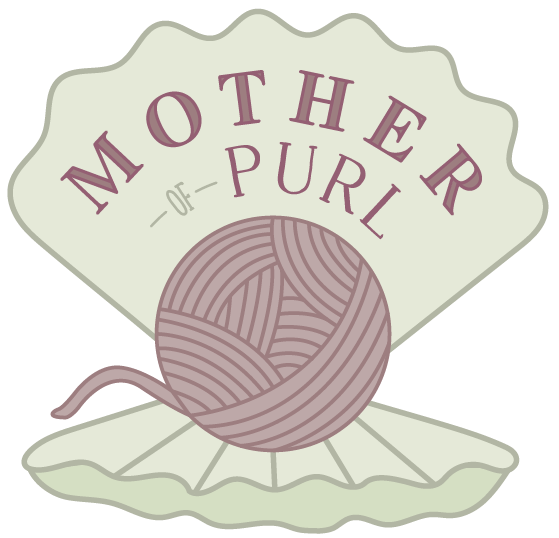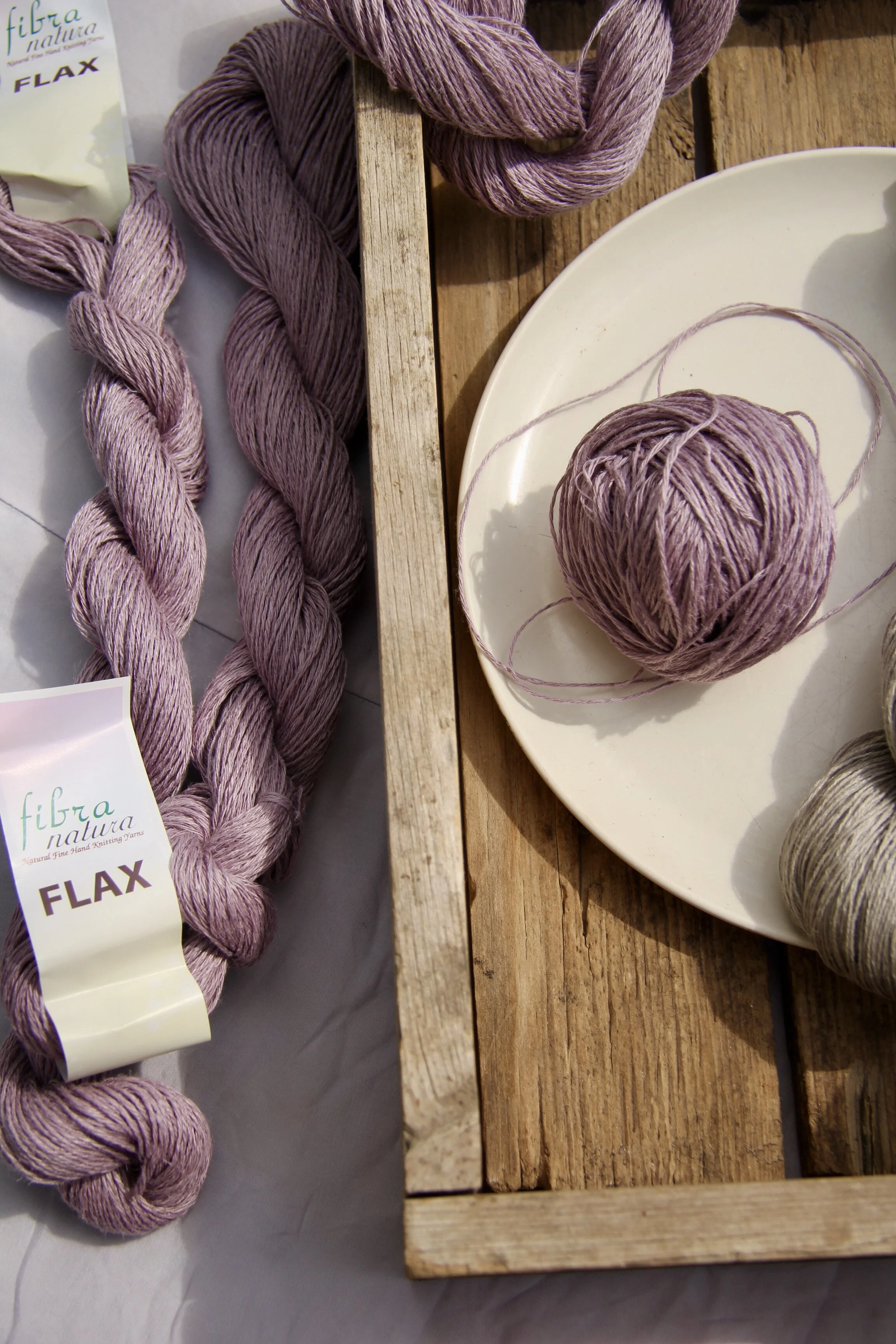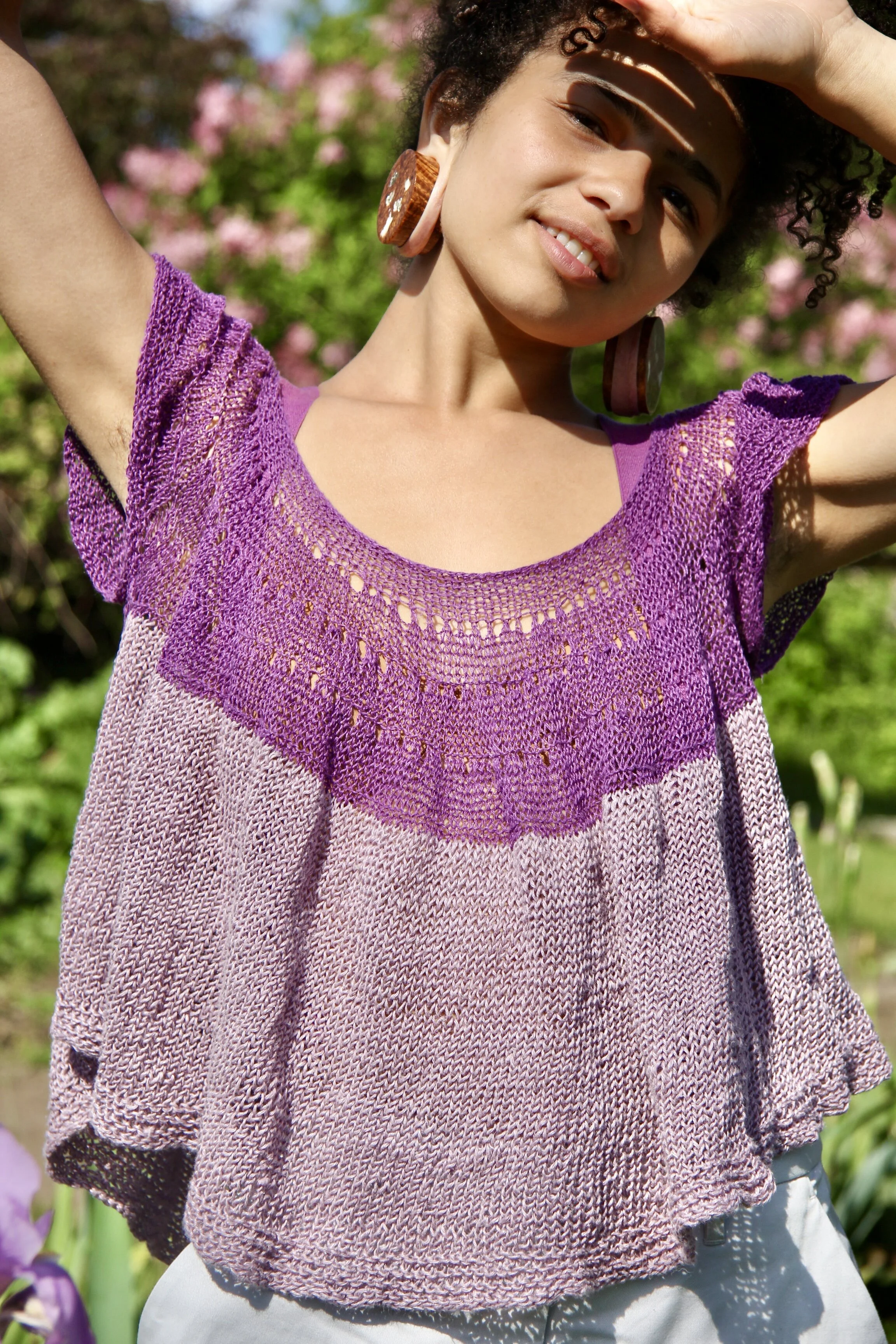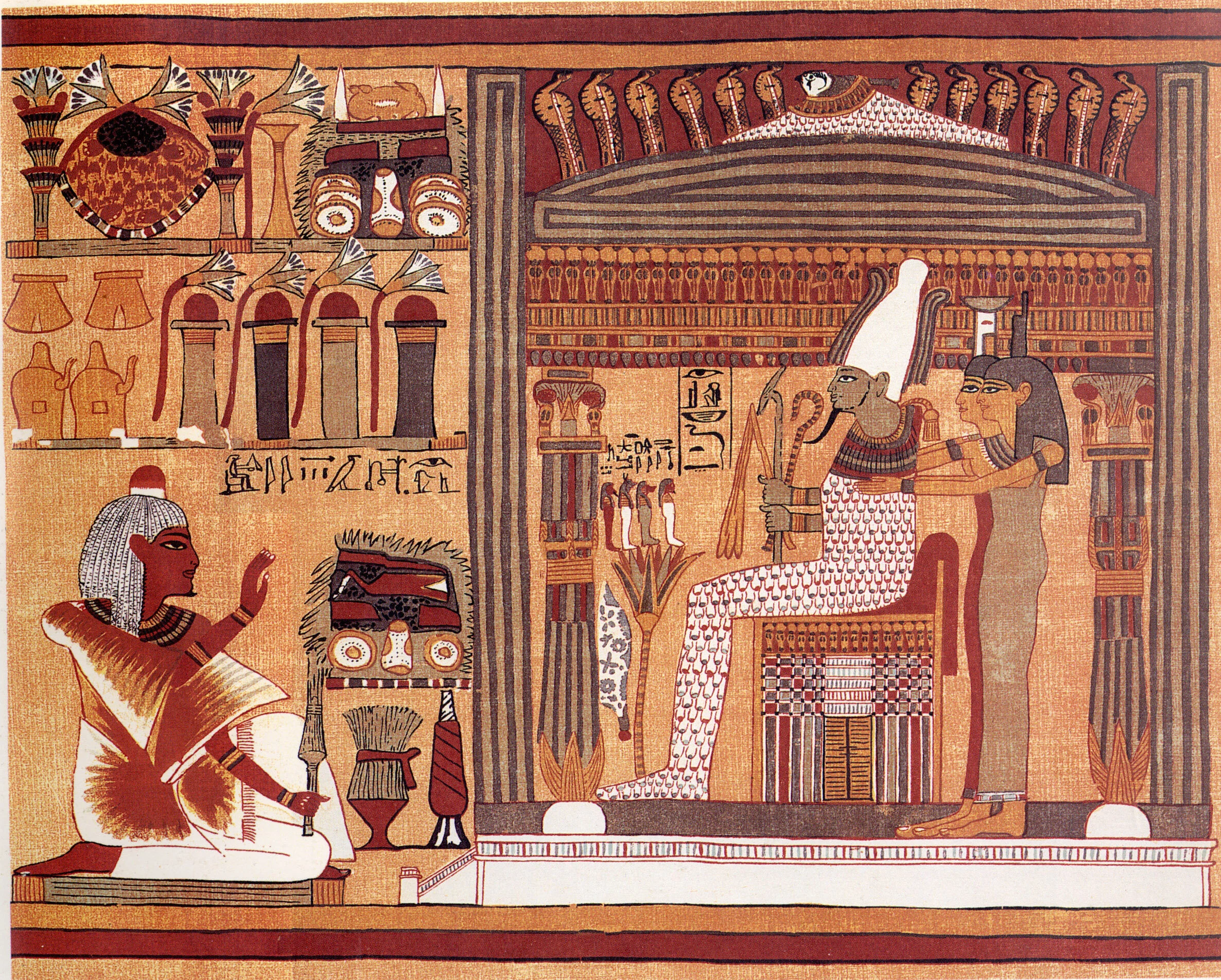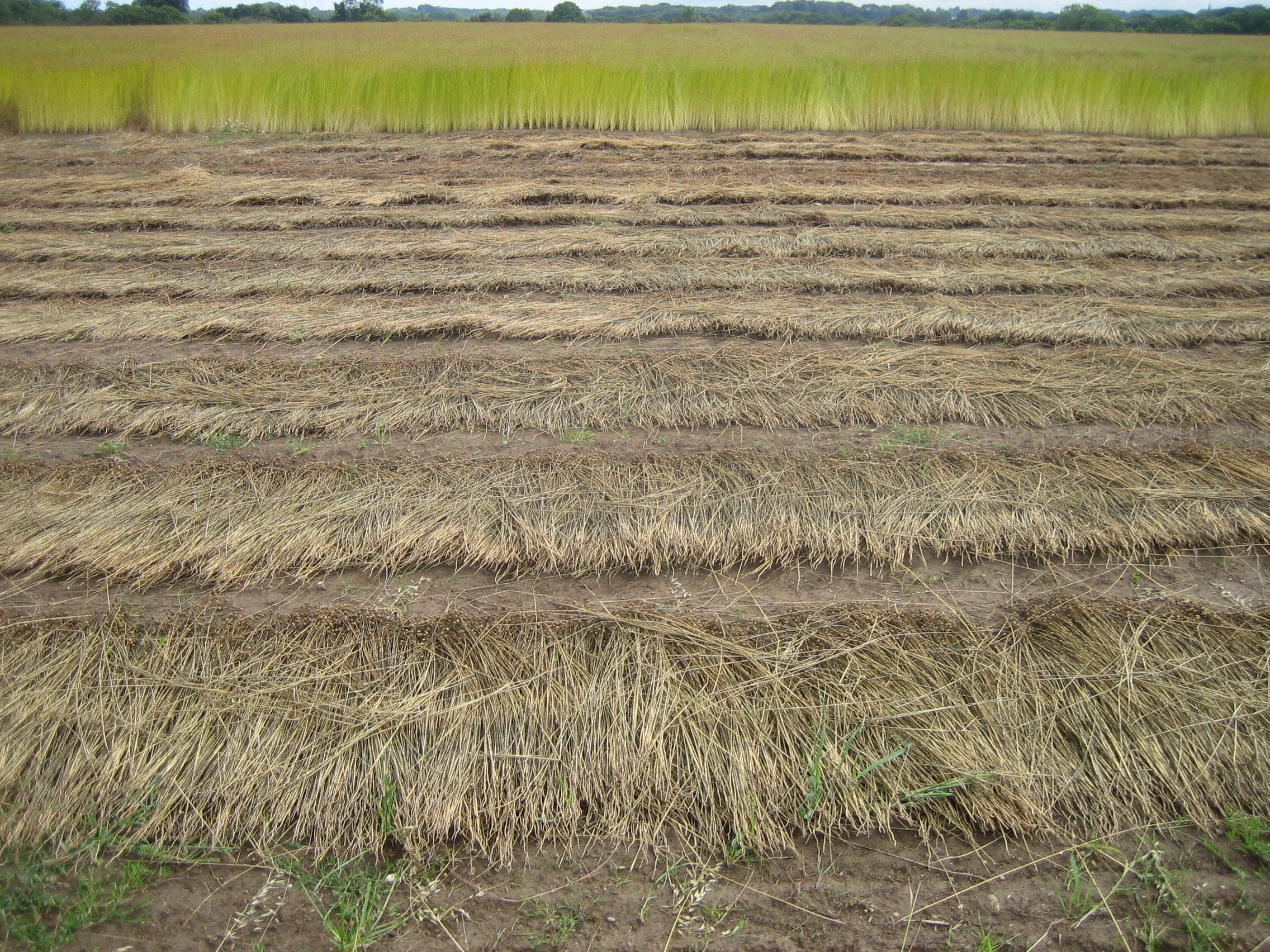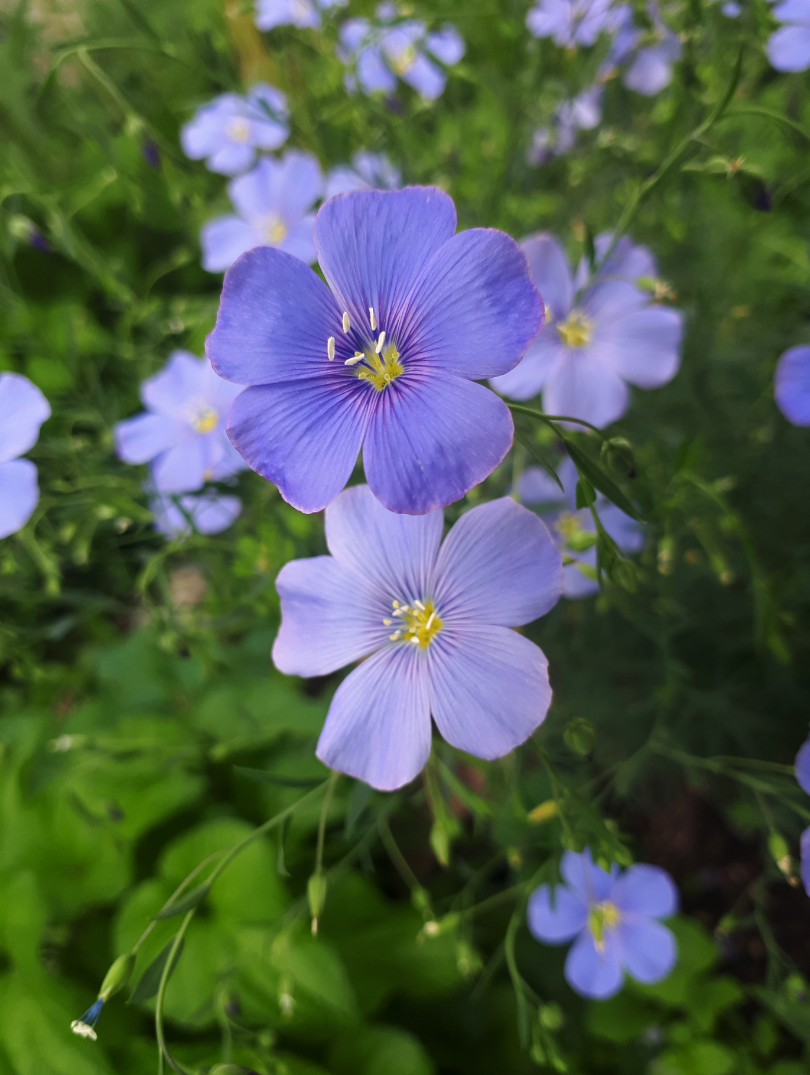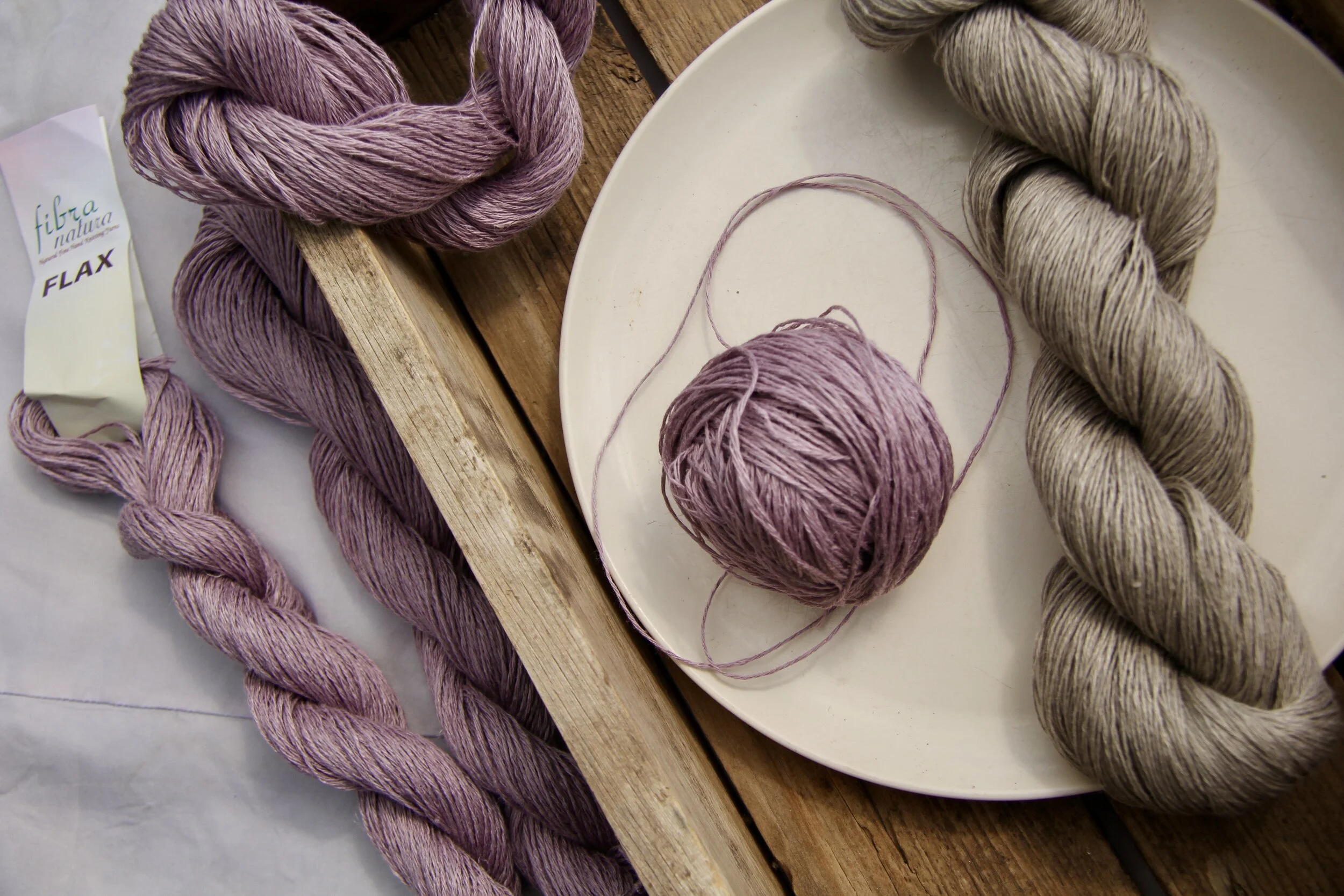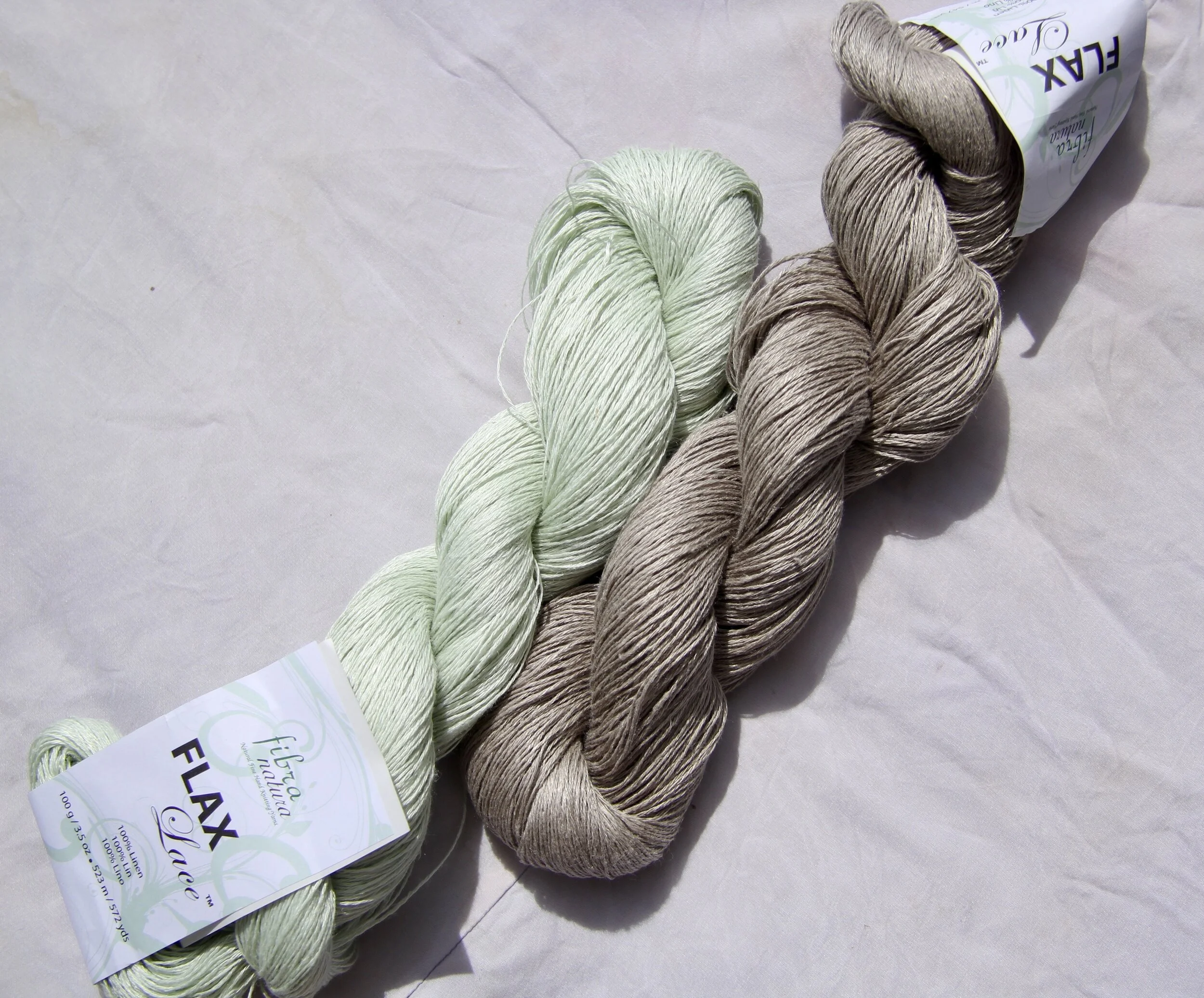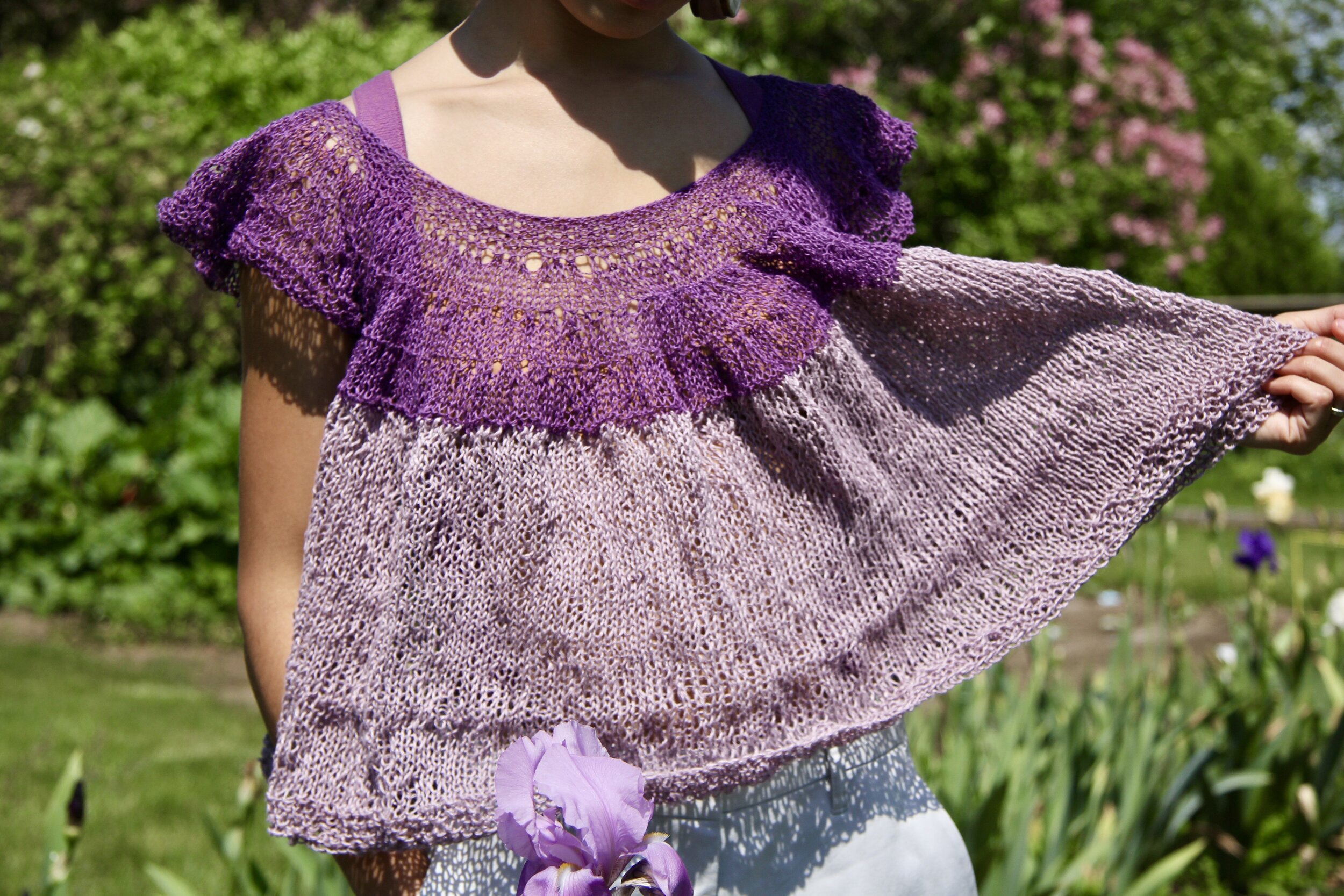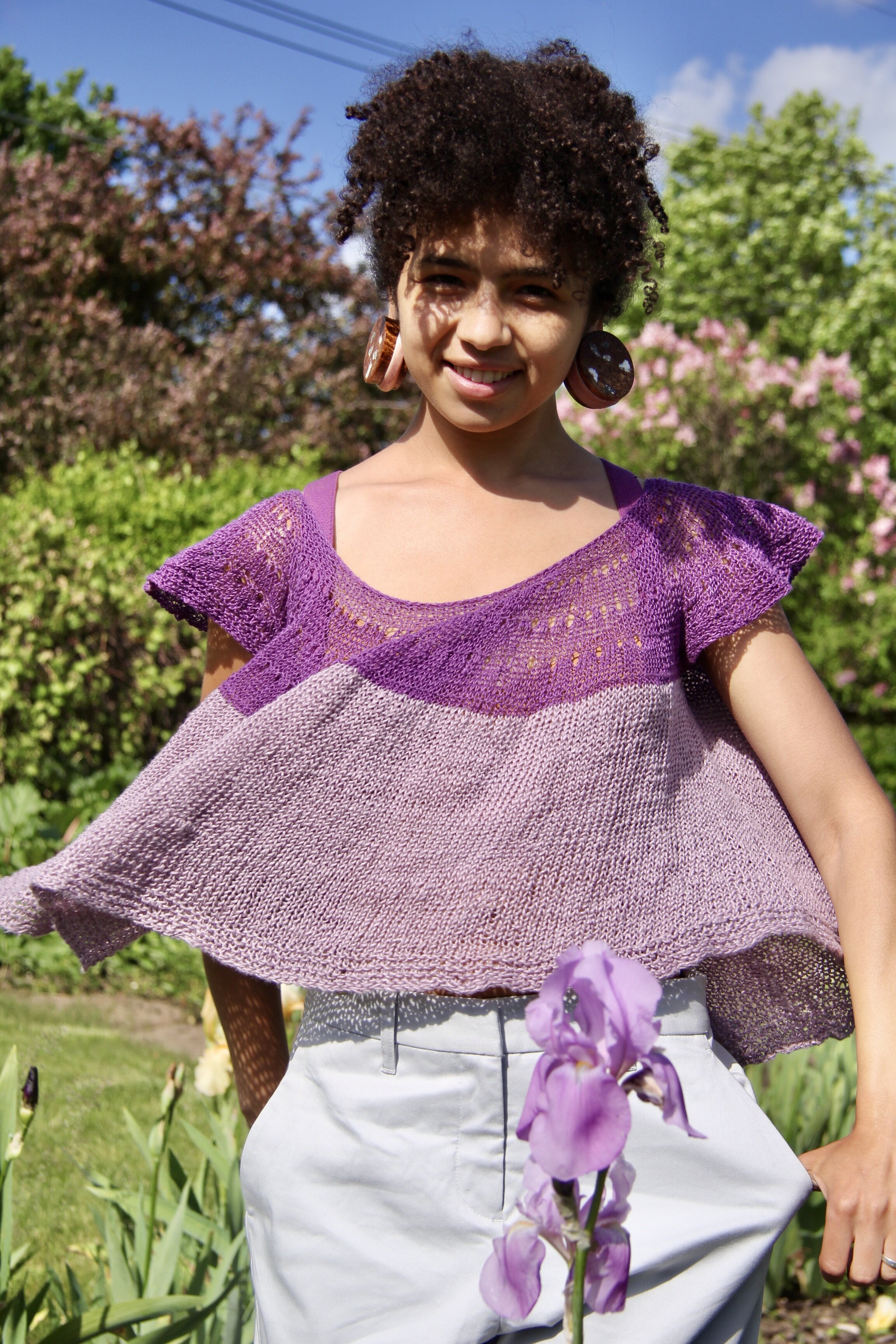Is Linen Sustainable? A Brief History of Linen and Tips for Using Flax
When Was Linen First Used, How Linen is Made, What makes Linen a Sustainable Fabric and Tips for Knitting with Linen Yarn.
*Disclosure: I only recommend products I would use myself and all opinions expressed here are my own. This post contains affiliate links that at no additional cost to you, I may earn a small commission if you buy as a result of clicking this link. thank you.
Use Code Motherofpurl for 15% off Your Yarns from Universal Yarn
I had the great privilege to be able to design and knit with Fibra Natura Flax Lace and Fibra Natura Flax from Universal Yarn.
This yarn is 100% Linen and comes in a great variety of colors.
The Fibra Natura Flax in a Light weight comes in 137 yard skeins.
And the Fibra Natura Flax Lace comes in 547 yard skeins.
Use Code Motherofpurl for 15% off Your Yarns from Universal Yarn
I used 4 skeins of flax, and one skein of flax lace to make my my new favorite summer knit.
Iris Crop Top Knitting Pattern
I don’t know about you, but my summer knitting is a lot more wearable than my deep winter sweaters. I wear my Summer knits way more, and am often seen out and about flaunting a hand knit.
Summer 2021 is the summer of linen! I love the breathability of the fabric, and it really feels like wearing nothing at all.
A brief History of Linen
Flax was one of the first plants to be cultivated in the fertile crescent, dating back to 7000 BCE. Making linen one of the first fabrics humans used.
There are hieroglyphs in Egypt depicting the process of linen textile production, and mummies were often wrapped in linen cloth.
Published by James Wasserman; facsimile made by E. A. Wallis Budge; original artist unknown - Scanned from The Egyptian Book of the Dead: The Book of Going Forth by Day by James Wasserman et al.Created: Book published 1994; facsimile created 1890; original artwork created c. 1300 BC
Linen is know for being very strong and linen cloth has survived for a long time in good condition. The Oldest preserved garment is a head dress found in Nahal Hemar cave - in Israel circa 6500 BC and the Oldest preserved full body garment was a linen shirt from first dynasty Egyptian tomb circa 3000 BC.
Unlike other plant fibers like cotton, which is made from the seed head of the plant- designed to hold onto moisture, Linen is made from the stem of the plant, and the stem of the plants job is to move moisture, so linen is a naturally cool and moisture wicking fabric.
It makes sense that linen was used in warm climates for cooler clothing, and then became popular in the western world for undergarments, clothing and housewares in the medieval time period. Linen was so popular as a textile that the term “Linens” became synonymous with towels, sheets, tablecloths, and clothing. I know in our home we still call the closet outside our bathroom, where we keep all the towels and extra bedding “The linen Closet”
Fun Fact:
Linen also played a role in banking. The most significant banking operations built on textiles were those of the Fuggers of Augsburg in what is now southern Germany. In 1408 Hans fugger was a wool and linen merchant and employed 50 weavers, his son Jakob, a weaver himself expanded into trading and began issuing bills and exchange. Jakob and his brothers built the families’ banking operations throughout Europe which the textile proceeds provided the start up money to develop. They often accepted mining operations as collateral for payment, and had a monopoly on transferring money collected from the Catholic Church’s sale of indulgences in Germany and Scandinavia. leveraging money from the textile trade Jakob amassed the largest fortune of the age.
The production of linen was completely done by hand until a mechanical device was invented in the 1830s. Linen was one of the most popular fabrics until the cotton gin was invented, making cotton fabric “more economical” than the slower, by hand process of creating linen fabric.
Of course, the production of cotton was not TRUELY economical, as it relied entirely on enslaved people to grow and process the fiber.
The flax plant needs a lot of nutrients and the way the farming was done when europeans moved to the americas depleted the soil so much that after growing flax for a few seasons, they were no longer able to grow it because the soil did not have enough nutrients.
In the 19th century linen became a status symbol, and linen mens suits were prized, similar to today, where linen is considered a luxury fabric and many couture houses and brand name clothing companies use linen to create their garments.
Is Linen Sustainable?
Linen is a sustainable fabric, it is a plant based and biodegradable fiber.
The processing of linen uses little water and requires very little chemical processing for the production of the fabric.
The entire plant from which linen is made can be used. Many people eat flax seed and use flaxseed oil for cooking, and we also use flax for linseed oil for conditioning wood furnture. Flax is a multiuse plant!
Linen is also one of the most durable fabrics, making it last longer thus reducing the need to buy new garments, as your linen clothing will last a long time.
Universal Yarn Fibra Natura Flax
How linen is Made:
Linen is made from the flax plant.
Flax (Linum usitatissimum) is an annual plant that is harvested for both the seed and the stem.
The stem is what is used to make Linen Fabric.
Before the flax can be spun, the flax undergoes a process to get it ready.
First, the stalks must be retted, which entails either soaking the flax in water, or allowing it to get wet with the dew. The soaking process can take days to weeks until the flax is ready.
Then, when the outer layer of the stem has more or less, rotted off of the plant.
The flax stalks need to be beaten in a mechanical device called a breaker.
The breaker loosens the strands and separates the inner from the outer core.
The inner core is called Boon, and the flax is then further processed on a hackle, (similar to a comb and hackle which you may be familiar with in wool processing. The hackle softens the fiber and separates the strings of the fiber further.
The short parts of the fiber that are removed when using the hackle are called the tow, and the tow is used for course fabric, but the long strands are set aside into bundles that are called Stricks.
In linen processing most of the plant is removed before you have the fiber that is suitable for garments.
The stricks are dressed on a distaff and spun into yarn. To create a consistent yarn, the fiber must be constantly made wet, so at home spinners are often seen with a bowl of water nearby when spinning flax.
Egyptian Hieroglyphs also depict what I would liken to a yarn bowl, but that is filled with water and has a latch that forces the stricks of linen to pass through the water before being spun.
Tips and Tricks for Knitting with linen Fiber:
Linen is very strong, it is there times stronger than cotton and is 20% stronger when it is wet.
Linen is also highly absorbent and dries quickly. Which makes it great for Long lasting garment creation.
Iris Crop top Knitting Pattern
1. Linen might seem a bit rough when you first get it, but the magic of linen is that the fiber softens each time it is washed.
Some people wash their yarn before they knit or crochet with it. I knit with it first, and then wash the finished fabric to avoid a tangled mess in my washing machine.
Light Purple : Fibra Natura Flax in Elderberry
Dark Purple: Fibra Natura Flax Lace in Purple
2. Linen can be slippery when you’re knitting with it because the fiber is a bit stiff, if you can use wooden knitting needles/ hooks. It Is less likely to slip off and unravel. Additionally, if you are substituting linen in a pattern that calls for wool, you will want to decrease in needle size. The stitches of linen do not compress the needle like wool does, and they need to have their own space.
3. It may be a bit more tedious to take the time to wind your linen yarn by hand into a ball instead of using a ball winder to make a cake- but its worth it.
I found that the cake would collapse on itself and sometimes tangle, where as, when it was wound into a ball it was pleasant to manage.
4. Traditional wool joins like the spit splice or even the magic knot will not work with linen yarn, you must leave a long tail, and weave in your ends, you can also try trapping your yarn as if you were knitting intarsia for extra support.
Will Linen Shrink?
5. Last but not least, you must swatch, understanding that the nature of the fabric changes after the garment is washed and dried will play a crucial part in knitting a garment that fits the way you want it to. The stitches that you knit will come off the the needle looking wrinkly and stiff, but when you put your hand knit garment in the washing machine and the dryer, the hand of the fabric changes and becomes deliciously drapey, and the stitches settle into themselves and into each other, the fabric doesn’t really shrink in the way that wool felts, but it does, settle.
If you have not tried knitting with linen, I can say from experience it is well worth it, the Iris crop top that I designed and knit in Universal Yarn’s Fibra Natura And Fibra Natura Flax Lace is so comfortable to wear, and has already become a summer staple.
Sources Cited:
St Clair, Kassia. The Golden Thread, How Fabric changed History. Published in Great Britain, Liveright a division of w.w Norton & company, 2019.
Postrel, Virginia. The Fabric of Civilization. How Textiles made the world. New York City, Hachette Book Group, 2020.
Wayland Barber, Elizabeth. Women’s Work. New York City, W.W Norton & Company, 1995.
